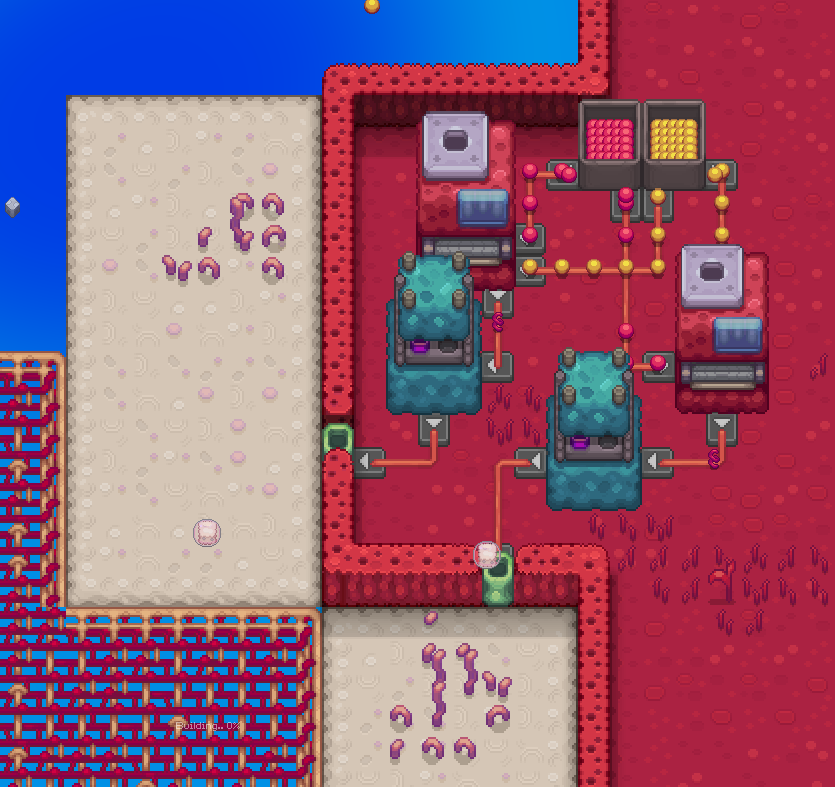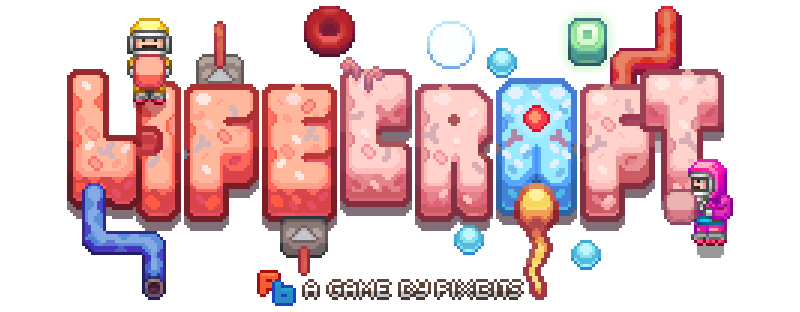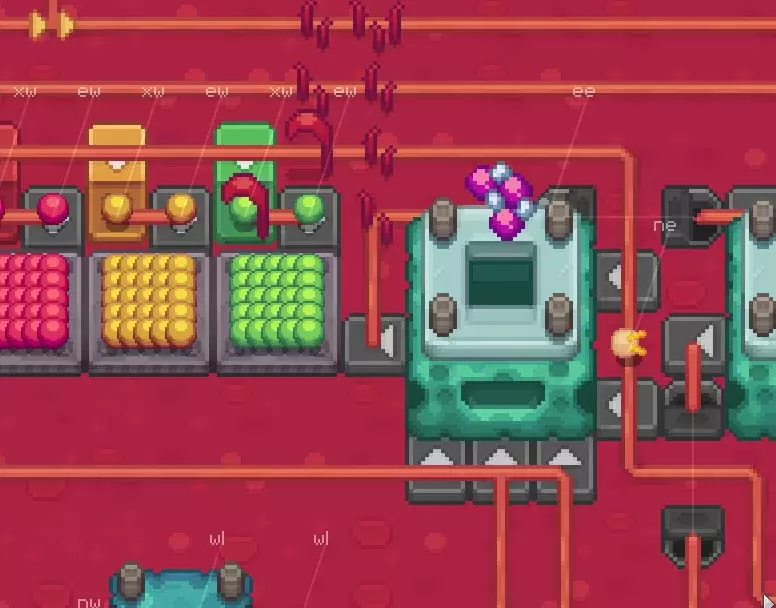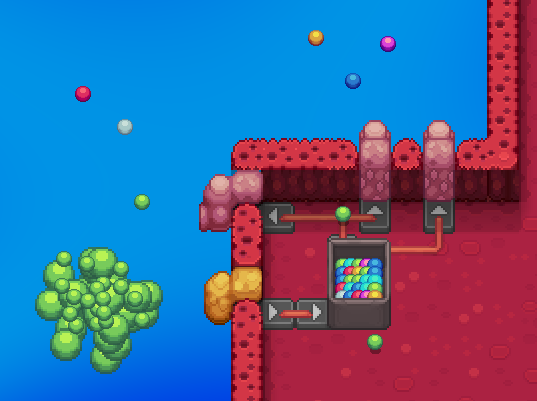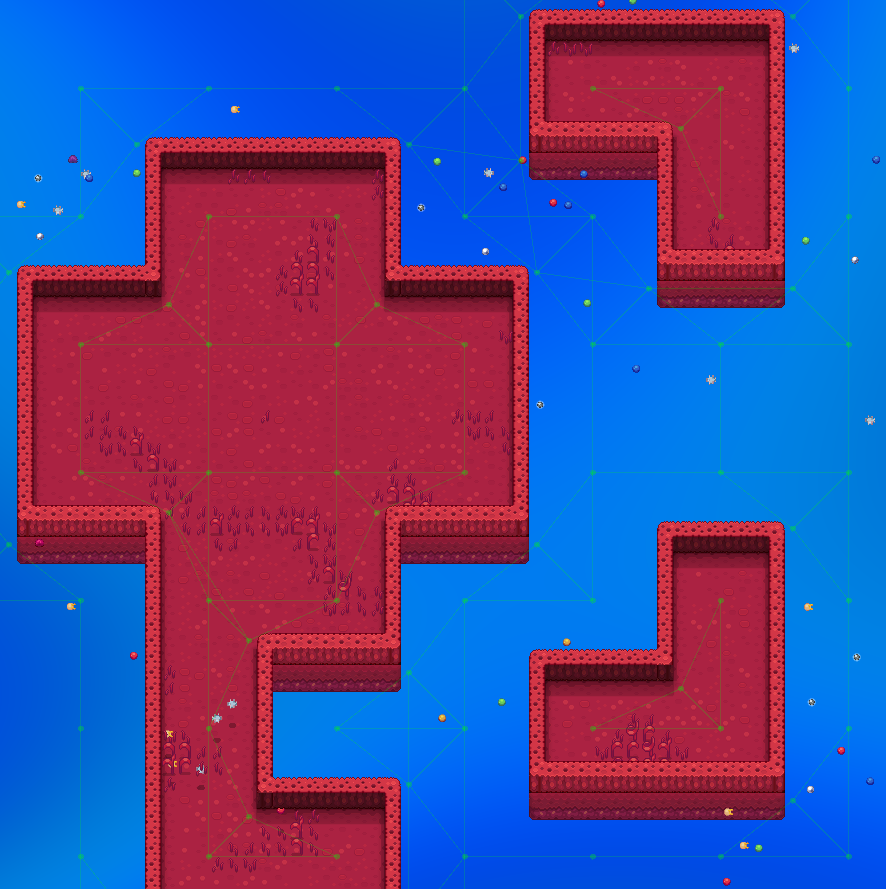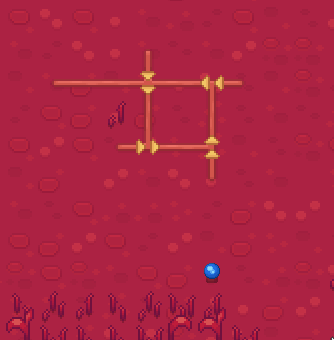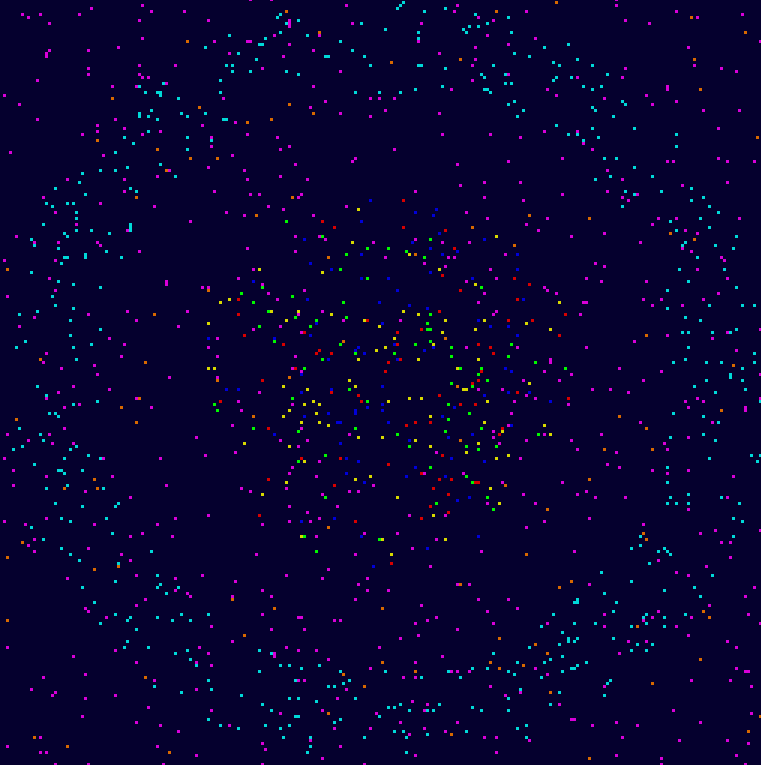Delivering with dispatchers
One of the main aspects of the game is expanding and building structures outside cells.
This can be done through dispatcher which can deliver materials directly to growing zones or to extracellular structures.
In this example we’re building some collagen helices with ribosomes, which are then assembled into collagen flooring and delivered outside (that’s that floating bubble!).
